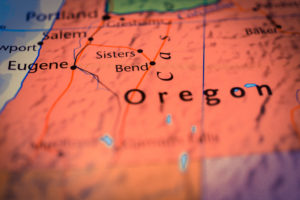 For many years, the State of Oregon was a preferred location for closing new and used aircraft deliveries primarily because it had no sales tax. However, due to the enactment of Oregon House Bill 3427, after January 1, 2020, Oregon may no longer be the preferred location for new aircraft deliveries nor for deliveries of used aircraft from persons who might be considered to be in the business of selling aircraft.
For many years, the State of Oregon was a preferred location for closing new and used aircraft deliveries primarily because it had no sales tax. However, due to the enactment of Oregon House Bill 3427, after January 1, 2020, Oregon may no longer be the preferred location for new aircraft deliveries nor for deliveries of used aircraft from persons who might be considered to be in the business of selling aircraft.
Beginning on or after January 1, 2020, sellers of aircraft who close transactions in Oregon may now be subject to Oregon’s Corporate Activity Tax (“CAT”). The CAT is a tax on the privilege to conduct commercial activity within the State of Oregon. Commercial activity is defined as “the total amount realized by a person, arising from transactions and activity in the regular course of the person’s trade or business, without deduction for expenses incurred by the trade or business.”[1] The CAT applies to Oregon commercial activity in the excess of $1 million dollars, at the rate of 0.57 percent.[2] There are numerous carveouts from taxable commercial activity, but the carveout most applicable to aircraft transactions is that commercial activity does not include receipts from the sale of “an asset described in section 1221 [capital assets] or 1231 [depreciable property used in a trade or business] of the Internal Revenue Code.”[3]
In looking at whether the CAT applies to a transaction, the first step is to determine if the seller has “substantial nexus” with Oregon. A “bright-line presence” in Oregon is sufficient to constitute “substantial nexus.”[4] A “bright-line presence” includes when the seller has “during the calendar year commercial activity, sourced to this state under section 66 of this 2019 Act, of at least $750,000.”[5] The next step is to determine if the commercial activity will be sourced to Oregon. The CAT provides that “in the case of the sale of tangible personal property, if and to the extent the property is delivered to a purchaser in this state,”[6] that sale will be considered to be commercial activity in the bright-line presence analysis.
As such, it is likely that a delivery of a new aircraft from the manufacturer (OEM) will trigger the CAT if the aircraft is delivered in Oregon. An OEM would meet the test for a bright-line presence in the state by simply delivering one aircraft in Oregon that costs more than $750,000. For example, a delivery from Gulfstream, Bombardier, Cessna, or any other major OEM would easily result in the application of the CAT to the manufacturer.
On the other hand, it may be likely that a used aircraft transaction between two private end-user parties would not trigger the CAT. In the scenario where the use of the aircraft is incidental to the business of the seller and not its sole purpose, the sale of the aircraft is likely not in the regular course of the seller’s business, or constitutes the sale of a capital asset or a depreciable asset used in the seller’s trade or business, and would not be subject to the CAT. If the aircraft is a capital asset of the seller under section 1221 of the Internal Revenue Code or property used in the trade or business of the seller which is depreciable under section 1231 of the Internal Revenue Code (even if it is held for less than one year), then the sale would not be subject to the CAT because the sale of those assets are excluded from the definition of commercial activity.
However, for sellers that are in the business of leasing aircraft or taking aircraft into inventory and reselling them may be subject to CAT on sales of aircraft that close in Oregon. It is important to note that the CAT applies to “unitary groups” of taxpayers, that have more than 50 percent common ownership.[7] Accordingly, it may not be possible to eliminate exposure to CAT by isolating Oregon transactions in separate entities.
Overall, there are numerous factors to consider when determining if Oregon is the best state in which to take delivery of or sell an aircraft. This article is intended to highlight the potential application of CAT to the seller in an aircraft delivery completed within the State of Oregon. For additional information and to determine the best delivery location for your aircraft transaction, please contact the attorneys at Aero Law Group PC and they will be happy to assist you.
[1] ORS 317A.100(1)(a)
[2] ORS 317A.125
[3] ORS 317A.100(1)(b)(B)
[4] ORS 317A.116(2)(c)
[5] ORS 317A.116(3)(c)
[6] ORS 317A.128(1)(c)
[7] ORS 317A.106

